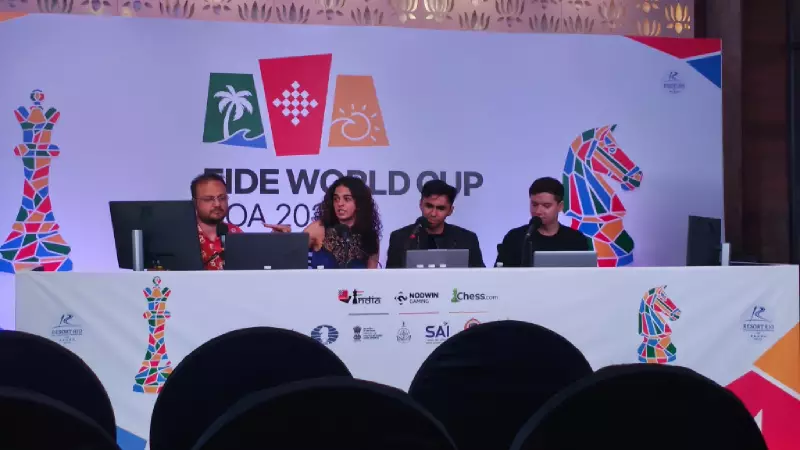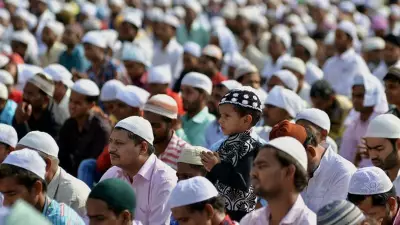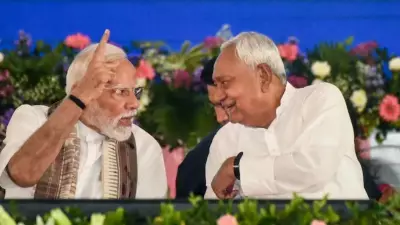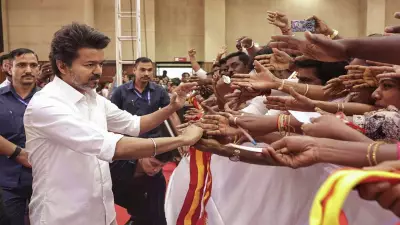
The New Faces of Chess Stardom
In a remarkable shift for the sport of kings, chess commentators have emerged as the new rock stars at the FIDE World Cup 2025 in Goa. The scene at Resort Rio in Arpora tells the story best: International Master Sagar Shah, dressed in his signature orange Hawaiian shirt, finds himself surrounded by enthusiastic fans seeking selfies and autographs, while a top Indian grandmaster walks by virtually unnoticed.
This phenomenon highlights how the landscape of chess has dramatically evolved. Commentators have become as popular, if not more so, than many elite players, marking a significant transformation in how the sport engages with its audience.
The Commentator Revolution
The fan zone at the FIDE World Cup semi-finals has become the epicenter of this revolution. ChessBase India's Sagar Shah, alongside Chess.com's Tania Sachdev and grandmasters Harshit Raja and Sahaj Grover, are conducting live commentary that has captured the imagination of chess enthusiasts across the nation.
Tania Sachdev, who transitioned from professional play to commentary several years ago and now serves as the face of Chess.com India's commentary panel, has become another highly sought-after personality at the event. Her journey from being part of India's gold medal-winning Olympiad team in Budapest last year to her current role demonstrates the expanding career opportunities in chess media.
"The commentary hours are very long," Tania reveals. "Often the players will finish, but the commentators have to go on for a while." She describes one particularly grueling day during the Freestyle Chess event in Vegas where she spent over 10 hours in the studio with only a 15-minute lunch break.
From Pandemic to Popularity
Sagar Shah's journey to becoming a chess media sensation began modestly. He started by traveling with his wife, writing Facebook posts and blogs that eventually grew into ChessBase India. Inspired by chess writer Peter Doggers, Shah began producing recorded video interviews that quickly became a popular medium for following chess events across India.
The real breakthrough came during the pandemic when live streaming became essential. Comedian Samay Raina played a crucial role in Shah's evolution, introducing the concept that chess, like other sports, should be followed live.
"Samay introduced the idea that you can do things live in chess," Shah recalls. "It's a sport, and sports are meant to be followed live, not just through recorded content. When Samay understands the common audience much better than I do, not just chess players, but those who don't usually follow the game."
This insight became the blueprint for chess coverage that would appeal to both hardcore enthusiasts and casual viewers alike.
Building a Chess Media Empire
What began as a solo backpacking journey for Shah has now expanded into a formidable organization. ChessBase India currently boasts a team of over 25 members, with seven staff members on the ground in Goa covering the World Cup. The operation runs with military precision, utilizing more than 15 mobile phones and numerous tripods to deliver comprehensive chess content to the public.
The collaboration between ChessBase India and Chess.com for streaming the Goa Chess World Cup represents a significant partnership in the chess broadcasting world. Their approach differs markedly from official FIDE commentary, which tends to focus on breaking down complex positions for chess-literate audiences.
In contrast, the ChessBase India broadcast incorporates good-natured personal jibes, jokes, and even occasional shayari (poetry), all aimed at building a sense of community among viewers.
The Art and Science of Commentary
When asked whether commentary requires more preparation than playing chess, Tania Sachdev offers insightful perspective. "It's a different kind of prep," she explains. "With chess openings, what has happened is that no matter how much prep you have done as a grandmaster on the day of the game, you are likely to be surprised on the board. It's easier to prepare for commentary than for playing. But it's longer hours. You need to look up players' repertoires, what their preferred openings are."
Despite the demanding schedule, Tania finds energy in the excitement of the games themselves. "When chess is exciting, you get so much energy from the action," she says.
Different Approaches, Same Passion
The chess commentary landscape now accommodates multiple styles and approaches. Commentator Jan Gustafsson identifies three distinct roles in modern chess broadcasting: the technical expert, the mass communicator, and what he calls "the entertainer."
"You can call it a clown, which not everybody likes, but it's my preferred role," Gustafsson admits. "Often, people get upset and say, 'Come on, please talk about the games, stop with the stupid jokes.' Everybody has different preferences, and every format is different. There is not one particular way to do it."
This diversity in commentary styles reflects the growing appeal of chess to broader audiences. While some traditionalists may prefer pure analytical content, the success of platforms like ChessBase India demonstrates that there's substantial appetite for entertainment-infused chess coverage that builds community while educating viewers.
The transformation of commentators like Sagar Shah and Tania Sachdev into celebrities in their own right signals a healthy evolution for chess as it continues to capture the imagination of new generations of fans across India and beyond.





